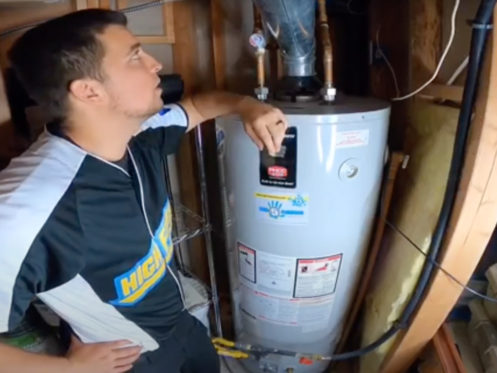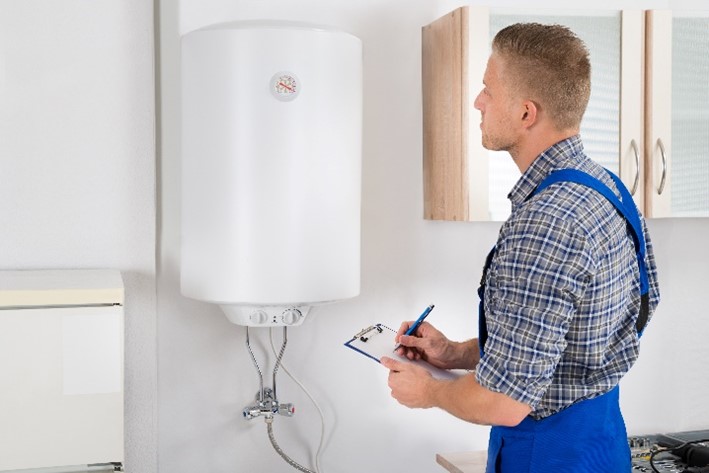Ensuring Longevity of Your Home's Hot Water System: Care Advice
Ensuring Longevity of Your Home's Hot Water System: Care Advice
Blog Article
Just how do you feel in relation to Tips on Maintaining a Water Heater?

Warm water is vital for day-to-day comfort, whether it's for a rejuvenating shower or washing meals. To guarantee your hot water system runs efficiently and lasts much longer, normal maintenance is crucial. This short article provides functional ideas and insights on just how to preserve your home's hot water system to avoid disruptions and expensive repair work.
Intro
Preserving your home's warm water system could appear daunting, but with a few simple actions, you can ensure it runs smoothly for several years to find. This guide covers everything from recognizing your hot water system to do it yourself maintenance ideas and understanding when to contact professional assistance.
Significance of Keeping Your Hot Water System
Routine upkeep not just extends the life expectancy of your warm water system however likewise guarantees it operates successfully. Overlooking maintenance can result in lowered efficiency, higher power bills, and even early failing of the system.
Indications Your Hot Water System Requirements Upkeep
Recognizing when your warm water system needs focus can stop significant issues. Keep an eye out for indications such as irregular water temperature, strange sounds from the heater, or rusty water.
Purging the Hot Water Heater
Purging your hot water heater eliminates debris buildup, improving effectiveness and prolonging its life.
Checking and Changing Anode Rods
Anode poles avoid corrosion inside the tank. Evaluating and replacing them when broken is essential.
Facility Concerns Requiring Expert Aid
Instances include significant leaks, electric troubles, or if your water heater is regularly underperforming.
Routine Expert Upkeep Conveniences
Professional maintenance can consist of detailed examinations, tune-ups, and making certain compliance with safety requirements.
Examining and Adjusting Temperature Level Settings
Adjusting the temperature level settings ensures optimal efficiency and security.
DIY Tips for Upkeep
You can do several upkeep tasks yourself to maintain your hot water system in top problem.
Checking for Leakages
On a regular basis examine pipes and links for leaks, as these can bring about water damages and higher costs.
Understanding Your Warm Water System
Prior to diving into upkeep tasks, it's helpful to understand the fundamental components of your warm water system. Usually, this includes the hot water heater itself, pipelines, anode rods, and temperature controls.
Monthly Upkeep Tasks
Regular monthly checks can aid catch minor issues prior to they rise.
Evaluating Pressure Relief Valves
Examining the pressure relief valve ensures it works properly and protects against excessive stress buildup.
Insulating Pipes
Shielding hot water pipelines lowers heat loss and can conserve power.
When to Call a Professional
While DIY maintenance is beneficial, some concerns need expert proficiency.
Conclusion
Regular maintenance of your home's hot water system is necessary for effectiveness, durability, and expense financial savings. By following these suggestions and recognizing when to look for specialist assistance, you can make sure a trusted supply of hot water without unanticipated disturbances.
Water Heater Maintenance: The Basics
Maintaining your water heater will ensure it operates efficiently and has a longer lifespan. Neglecting regular maintenance can lead to costly repairs and an even bigger chunk of your savings if you have to replace it sooner than necessary. But there’s good news: Most water heater maintenance tasks are relatively simple and easy for homeowners with basic DIY skills.
Flush the Water Heater
Over time, sediment and minerals can build up in the tank, reducing its efficiency and potentially causing damage. To flush the tank, turn off the power or gas supply, attach a hose to the drain valve near the bottom and open the valve to drain the water until it runs clear. Ideally, flush the tank annually.
Replace the Anode Rod
The anode rod is a sacrificial metal rod that helps prevent corrosion inside the tank. Inspect and replace it every three to five years or per the manufacturer's recommendation. To replace the anode rod, turn off the power or gas supply, drain a few gallons of water from the tank, unscrew the old rod and replace it with a new one. If the anode rod is significantly corroded or covered in calcium buildup, it's a sign the water heater may need to be replaced soon.
Tune-Up
A yearly tune-up can help identify potential issues and ensure your water heater operates at peak efficiency. This typically involves checking the thermostat, burner assembly (for gas heaters) and any other components specified by the manufacturer. During a tune-up, the technician may also clean the burner and adjust the pilot light (for gas heaters) or examine the heating elements (for electric heaters).
How to Maintain Your Water Heater
Insulate the tank. Insulating the tank can improve energy efficiency and reduce heat loss, saving you money on energy bills. You can purchase precut insulation blankets designed specifically for water heaters or use standard fiberglass insulation wrapped securely around the tank. Check the temperature. The recommended water temperature for most households is around 120 degrees Fahrenheit (49 degrees Celsius). Higher temperatures can increase energy costs and potentially cause scalding. Use a kitchen thermometer to check the temperature at the faucet nearest the water heater. Monitor water pressure. Excessive water pressure can strain the water heater and cause leaks or even tank failure. Install a pressure-reducing valve if necessary. The ideal water pressure range is between 60 and 70 PSI (pounds per square inch). Test the temperature and pressure (T&P) relief valve. The T&P relief valve is a safety feature that releases pressure if the tank gets too hot or the pressure builds up too high. Test it annually by lifting the lever and allowing a small amount of water to release. Replace the valve if it doesn't release water or reseal properly. Check for leaks. Regularly inspect the tank, pipes and fittings for leaks or corrosion. Deal with issues promptly to prevent further damage. Even a small leak can lead to significant water damage over time. Consider a tankless water heater. If your traditional tank-style water heater is nearing the end of its lifespan ( typically 10 years), consider replacing it with a tankless water heater. These units heat water on demand, reducing standby energy losses and potentially saving you money on your energy bills. Schedule professional maintenance. While homeowners can perform many water heater maintenance tasks, it's still a good idea to schedule professional maintenance every few years. A plumber or HVAC technician can thoroughly inspect the unit, identify potential issues and ensure it operates safely and efficiently. https://www.homeserve.com/en-us/blog/home-improvement/hot-water-heater-maintanence/

Do you appreciate more info about Tips For Maintaining Your Hot Water Heater? Place a remark down below. We would be pleased to know your feelings about this posting. In hopes to see you back again before long. Liked our piece of writing? Please share it. Let other people check it out. Thanks so much for taking the time to read it.
Click For More Info Report this page